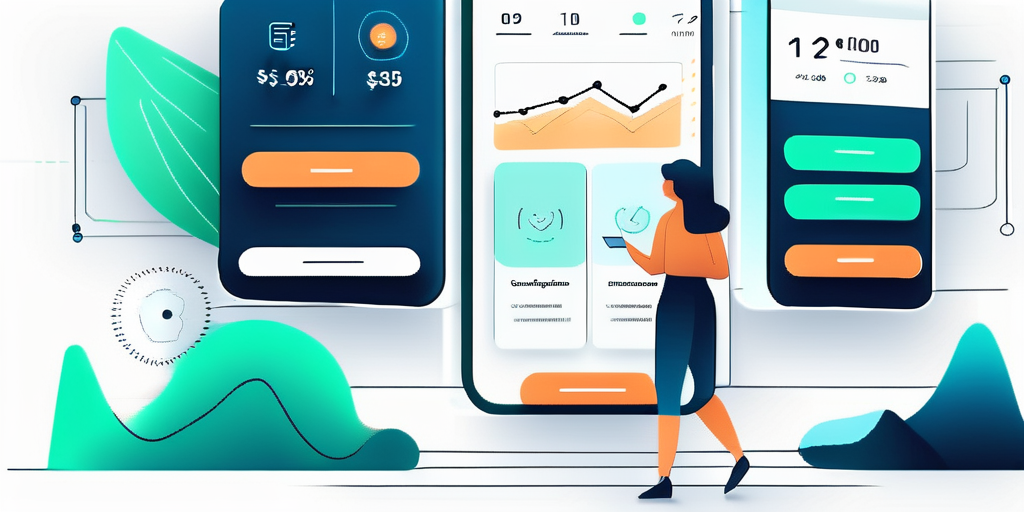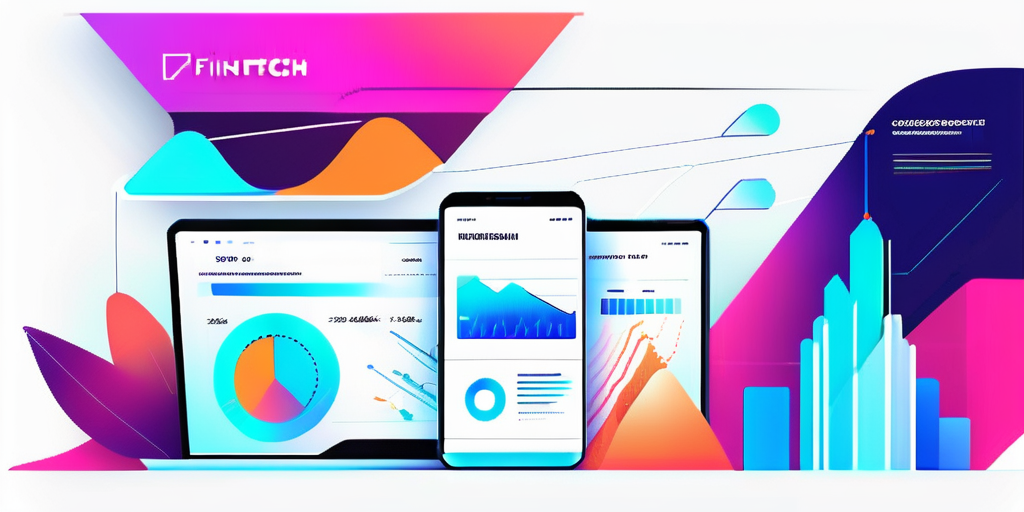In today’s rapidly evolving digital landscape, user experience (UX) and user interface (UI) design have become crucial elements in the success of fintech products. Creating intuitive, user-friendly interfaces that provide a seamless and enjoyable experience is essential for attracting and retaining customers in the highly competitive fintech industry.
Understanding UX UI Design
To fully grasp the significance of UX UI design in fintech, it’s important to first define these terms. UX design focuses on understanding users’ needs, goals, and preferences to create products that are efficient, easy to use, and enjoyable. On the other hand, UI design deals with the visual and interactive elements of a product, such as buttons, icons, and navigation menus.
Defining UX Design
UX design encompasses various aspects, including user research, information architecture, wireframing, prototyping, and usability testing. It aims to optimize the overall user journey by identifying pain points, eliminating unnecessary steps, and ensuring a smooth flow of interactions.
When it comes to user research, UX designers employ a range of techniques to gain insights into users’ behaviors, motivations, and needs. This may involve conducting interviews, surveys, or observing users in their natural environment. By understanding users’ goals and pain points, UX designers can create products that address their specific needs.
Information architecture is another crucial aspect of UX design. It involves organizing and structuring information in a way that is intuitive and easy to navigate. UX designers use techniques such as card sorting and user flow diagrams to create a logical and user-friendly structure for the product.
Wireframing and prototyping are essential steps in the UX design process. Wireframes are low-fidelity representations of the product, focusing on the layout and structure without getting into visual details. Prototypes, on the other hand, are interactive mockups that allow users to test and provide feedback on the product’s functionality and usability.
Usability testing is a critical part of UX design, as it helps identify any usability issues or areas for improvement. UX designers conduct tests with real users, observing their interactions and collecting feedback to refine and enhance the product’s user experience.
Defining UI Design
UI design focuses on how the product looks and feels. It involves creating visually appealing interfaces that are visually consistent, engaging, and easy to navigate. UI designers carefully select colors, typography, and graphical elements to enhance the overall user experience.
Color plays a significant role in UI design, as it can evoke certain emotions and set the tone for the product. UI designers consider factors such as brand identity, user preferences, and accessibility guidelines when choosing colors for the interface. They aim to create a visually pleasing and harmonious color scheme that enhances the overall user experience.
Typography is another crucial aspect of UI design. UI designers select fonts that are legible and appropriate for the product’s purpose and target audience. They pay attention to factors such as font size, line spacing, and readability to ensure that users can easily consume the content on the interface.
In addition to colors and typography, UI designers also focus on graphical elements such as icons and illustrations. These elements help communicate information and guide users through the interface. UI designers carefully design icons that are intuitive and visually consistent, ensuring that users can easily understand their meaning and purpose.
Furthermore, UI designers pay attention to the layout and visual hierarchy of the interface. They strategically arrange elements such as buttons, menus, and content to guide users’ attention and create a seamless navigation experience. By considering visual balance, contrast, and spacing, UI designers create interfaces that are visually appealing and easy to interact with.
In conclusion, UX UI design plays a crucial role in fintech by creating products that are not only visually appealing but also user-friendly and efficient. UX designers focus on understanding users’ needs and optimizing their journey, while UI designers enhance the visual elements to create a delightful user experience. By combining these two disciplines, fintech companies can create products that stand out in the competitive market and provide exceptional value to their users.
The Role of UX UI Design in Fintech
In the fintech sector, where users entrust their sensitive financial information to digital platforms, the role of UX UI design becomes even more critical. Let’s explore how UX UI design can positively impact fintech products.

When it comes to financial technology, user experience (UX) and user interface (UI) design play a crucial role in ensuring that digital platforms are not only visually appealing but also highly functional and user-friendly. The success of fintech products heavily relies on how well they meet the needs and expectations of their users.
Enhancing User Satisfaction
A well-designed user experience can greatly enhance user satisfaction, driving customer loyalty and advocacy. By understanding users’ goals and pain points, designers can create intuitive interfaces that empower users to accomplish their tasks effortlessly.
For instance, imagine a fintech app that allows users to manage their investments. A well-designed UX UI would provide a seamless and intuitive experience, enabling users to easily navigate through different investment options, track their portfolio performance, and make informed decisions. This not only saves users time and effort but also instills a sense of confidence and satisfaction in their financial management abilities.
Moreover, a positive user experience can lead to increased customer retention rates. When users find a fintech platform that meets their needs and provides a pleasant experience, they are more likely to continue using it and recommend it to others. This word-of-mouth promotion can significantly contribute to the growth and success of fintech companies.
Streamlining Financial Processes
UX UI design can streamline complex financial processes, making them more accessible and efficient. Intuitive interfaces and clear navigation structures ensure that users can easily find and access the functionalities and information they need.
Consider the process of applying for a loan through a fintech platform. A well-designed UX UI would guide users through each step, providing clear instructions and eliminating any confusion. This not only simplifies the loan application process for users but also reduces the chances of errors or misunderstandings.
Furthermore, a streamlined UX UI design can speed up financial transactions. For example, a fintech app that allows users to transfer funds between accounts should have a simple and efficient interface that minimizes the number of steps required to complete the transaction. This not only saves users time but also reduces the risk of errors or delays.
By streamlining financial processes, UX UI design contributes to the overall efficiency of fintech companies. When users can easily navigate through a platform and complete tasks without obstacles, they are more likely to engage with the platform frequently and recommend it to others.
In conclusion, UX UI design plays a vital role in the fintech sector. It enhances user satisfaction, driving customer loyalty and advocacy. Additionally, it streamlines complex financial processes, making them more accessible and efficient. By prioritizing UX UI design, fintech companies can create digital platforms that not only meet users’ needs but also exceed their expectations.
Key Elements of UX UI Design in Fintech
Successful UX UI design in fintech relies on several key elements that result in impactful user experiences. Let’s explore these essential elements:
User-Centric Design
Putting users at the center of the design process is fundamental to creating successful fintech products. User-centric design involves gathering insights through user research, conducting usability testing, and incorporating feedback to continuously improve the product. By understanding users’ needs, designers can tailor experiences that resonate with their target audience.
Simplicity and Clarity
Simplicity and clarity are paramount in fintech design to ensure ease of use and minimize cognitive load. By presenting information in a straightforward and easily digestible manner, users can quickly understand and engage with the product. Clear labeling, logical organization, and concise instructions contribute to a user-friendly experience.
Security and Trust
Given the sensitive nature of financial information, establishing trust is crucial in fintech products. UX UI design should prioritize security measures, such as secure login protocols, encryption, and multi-factor authentication, to instill confidence in users. Communicating these security measures visually through design elements helps users feel secure and protected.
The Impact of Poor UX UI Design
Poor UX UI design in fintech can have significant consequences, negatively impacting both users and fintech companies. Let’s examine the potential consequences of subpar design:

User Frustration and Abandonment
Complicated, confusing, or unresponsive interfaces can frustrate users and lead to abandonment. If users encounter difficulties navigating a platform or completing financial transactions, they are likely to abandon the product and seek alternatives. This loss of potential customers directly affects a fintech company’s growth and revenue.
Financial Losses and Reputation Damage
Besides user dissatisfaction, poor UX UI design can also result in financial losses and damage a company’s reputation. Negative experiences shared by dissatisfied users can quickly spread through social media and online reviews, tarnishing a fintech company’s brand image. Losing the trust of users can have long-lasting consequences, impacting customer acquisition and retention.
Future Trends in UX UI Design for Fintech
As technology continues to advance, UX UI design in fintech is poised to embrace several exciting trends. Let’s explore some of these future trends:

AI and Machine Learning
Artificial intelligence (AI) and machine learning technologies offer immense potential in optimizing user experiences in fintech. AI-powered chatbots, for example, can provide personalized customer support, reducing the need for human intervention. Machine learning algorithms can also analyze user behavior to offer tailored recommendations and financial insights.
Voice User Interface (VUI)
The rise of voice assistants, such as Amazon’s Alexa and Apple’s Siri, has paved the way for voice user interfaces in fintech. Voice commands and natural language interactions enable users to perform financial tasks hands-free, providing a convenient and accessible experience. Incorporating VUI into fintech products can revolutionize the way users interact with financial services.
Biometric Authentication
Biometric authentication, such as fingerprint and facial recognition, offers a secure and seamless alternative to traditional password-based security measures. UX UI design in fintech will increasingly incorporate biometric authentication methods to enhance user convenience while ensuring robust security.
In conclusion, UX UI design plays a pivotal role in the success of fintech products. By deeply understanding user needs, creating seamless experiences, and prioritizing security, fintech companies can differentiate themselves in the competitive market and build long-lasting relationships with their customers. With the emergence of AI, voice interfaces, and biometric authentication, the future of UX UI design in fintech holds immense potential for revolutionizing the way users interact with financial services.
